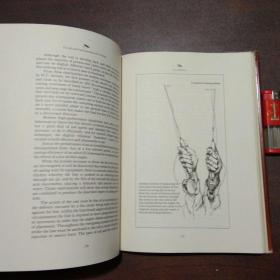Introduction:
Fishing for grass carp, also known as grass carp fishing, can be a rewarding experience, especially when the weather is less than ideal. Overcast and rainy days can often present unique challenges, but with the right techniques and strategies, you can still enjoy successful catches. In this article, we delve into the art of fishing for grass carp during these less sunny periods, offering expert tips and tricks to help you land those elusive fish.
Understanding Grass Carp Behavior in Overcast and Rainy Conditions:
Grass carp are known for their resilience and adaptability, thriving in a variety of environments. However, their behavior can change during overcast and rainy days. Here's what you need to know:
Sheltered Waters: Grass carp tend to seek shelter in deeper waters during bad weather. Look for areas with submerged logs, rocks, or other structures that provide cover.

Cooler Waters: Rainy days can lead to cooler water temperatures, which can make grass carp more active. Target areas where the water is cooler, such as deeper holes or areas with a current.
Feeding Patterns: Overcast and rainy conditions can alter the feeding patterns of grass carp. They may become more sporadic or less active, so patience is key.
Essential Gear for Overcast and Rainy Day Grass Carp Fishing:
To maximize your chances of success, it's important to have the right gear:
Rod and Reel: Use a medium-heavy action rod with a sensitive tip for better feel. A quality spinning reel with a smooth drag system is ideal.
Line: 12-15-pound monofilament or fluorocarbon line is suitable for grass carp. Fluorocarbon is less visible in water, making it a great choice for low-light conditions.
Lures and Baits: Live bait, such as nightcrawlers or grasshoppers, can be highly effective. Artificial lures like soft plastics or spinnerbaits can also work well, especially in overcast conditions.
Waders and Rain Gear: Since you'll likely be wading or fishing from a boat, it's essential to dress appropriately for the weather. Waterproof waders and a good-quality rain jacket will keep you dry and comfortable.
Techniques for Overcast and Rainy Day Grass Carp Fishing:
Patience and Timing: Overcast and rainy days can be unpredictable. It's important to be patient and wait for the right moments to fish. Pay attention to weather patterns and fish activity to determine the best times to cast.
Presenting Your Bait: In low-light conditions, it's crucial to present your bait or lure in a way that mimics natural prey. Slow and steady retrieves can be more effective than fast-paced movements.
Adjusting Your Approach: Since grass carp may be less active during overcast and rainy days, it's important to adjust your approach. Start with slower retrieves and smaller movements, and gradually increase speed if necessary.
Reading the Water: Pay close attention to the water's surface. Look for signs of fish activity, such as splashes or disturbances, which can indicate the presence of grass carp.
Using Live Bait: Live bait can be particularly effective during overcast and rainy days. Ensure your bait is fresh and lively, as this will increase its appeal to the fish.
Conclusion:
Fishing for grass carp during overcast and rainy days can be challenging, but with the right techniques and mindset, it's certainly achievable. By understanding the behavior of grass carp in these conditions, choosing the appropriate gear, and adapting your approach, you can increase your chances of success. Remember to be patient, read the water, and enjoy the experience, as the rewards of catching a hard-fighting grass carp are well worth the effort. Happy fishing!












